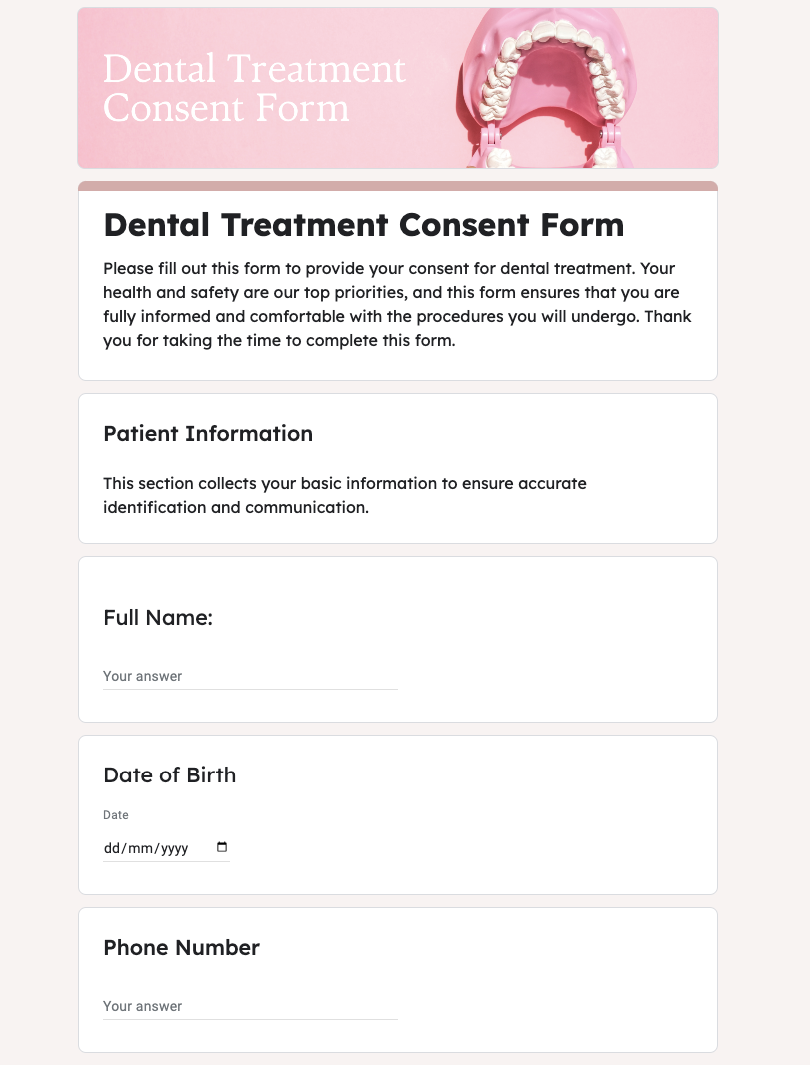Dental Treatment Consent Form
FREE
A Dental Treatment Consent Form is essential for ensuring clear communication between patients and dental professionals. It provides detailed information about the proposed treatments, potential risks, and benefits, empowering patients to make informed decisions about their oral health. By using this form, dental practices can build trust, protect themselves legally, and demonstrate a commitment to patient care and transparency. Encouraging patients to complete this form not only enhances their understanding but also fosters a stronger patient-dentist relationship, ensuring a smoother, more comfortable treatment experience.



